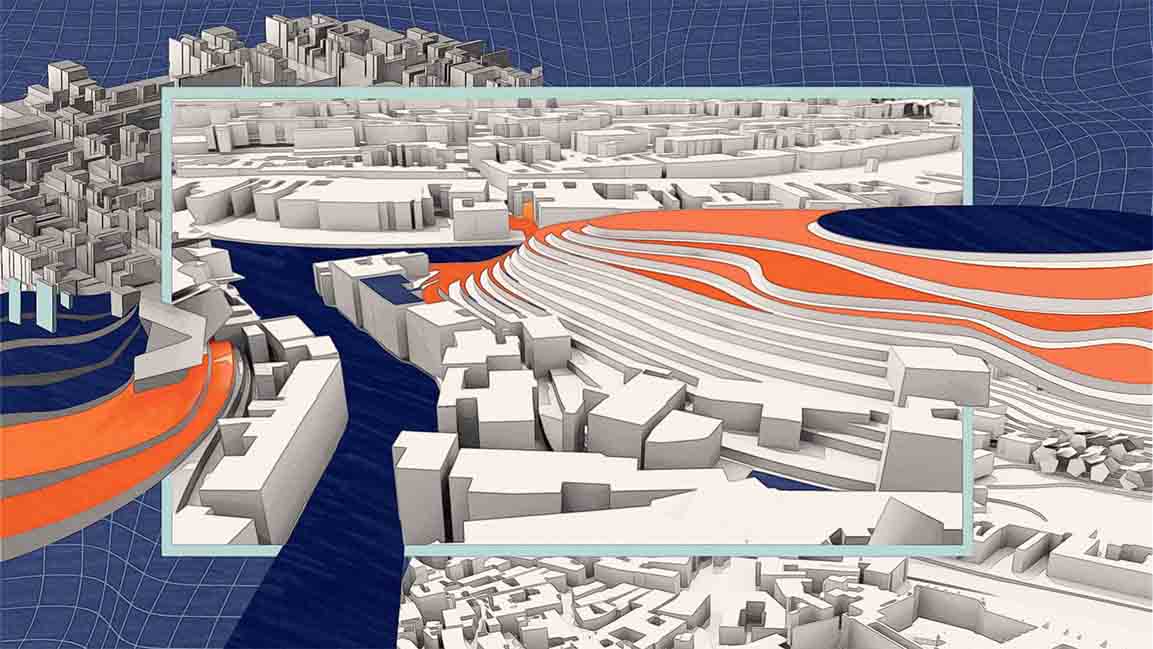- | 1:20 pm
These giga projects in the Middle East will have a broader economic impact
These projects — designed to house millions of residents and test a new model for society – will impact over a dozen different sectors, and provide economic and environmental outcomes.

There’s no denying it — when it comes to giga projects, the Middle East, especially Saudi Arabia, is turning heads. These futuristic developments are eye-popping in their ambition, typically cost billions of dollars, and can be economically transformative.
These projects — designed to house millions of residents and test a new model for society – will impact over a dozen sectors, including design and construction, media, tourism, and many more, and are expected to provide social and environmental outcomes.
Among these new giga-projects, NEOM, the most highly ambitious undertaking, is located on a coastal strip in Tabuk in the northwest of the country; three areas have been officially announced — primarily The Line, based on the idea of layering city functions vertically, Oxagon, which will become the largest floating industrial complex in the world, and Trojena, a year-round destination with a ski slope, and wellness facilities.
When completed, The Line could accommodate up to 9 million residents, who would live in a city of no roads, no cars — only flying taxis — plus a high-speed rail with an end-to-end transit time of just 20 minutes. Then there are the robotic avatars and holograms set to become part of everyday life.
On the Red Sea coast in the far west of Saudi Arabia, the Red Sea Project, an impressive 34,000 square kilometers occupying an archipelago of more than 90 islands, aims to be a world leader in regenerative tourism. The Red Sea International Airport is nearing completion and is set to open soon, while 50 resorts and more than 1,000 residential properties are due for completion by 2030.
Another giga project, underwritten by the Public Investment Fund, is Diriyah, a UNESCO World Heritage site undergoing a $50-billion revamp to build more than 3,000 residential units in the traditional Najdi design and another 300-plus luxury branded residences.
Also under development in the Riyadh region is Qiddiya, the entertainment, sports, and culture hub featuring theme parks, arenas, outdoor activities, and motorsports. Over a total area of 334 square kilometers and a budget of $8 billion, construction began in early 2018.
In the UAE, Expo 2020 Dubai may have ended, but work is now underway to transform it into District 2020 – the country’s first 15-minute city, a cycle-friendly, traffic-free suburb of the growing metropolis.
It will include a route for self-driving vehicles, a 10-kilometer cycling track, interconnected pedestrian pathways, and a 5-kilometer jogging track.
Meanwhile, the Dubai Islands will comprise five islands with a total square area of 17 square kilometers and have over 20 kilometers of beaches, parks, open spaces, and premium golf courses overlooking the Arabian Gulf. A $4 billion mega mixed-use project is planned on Saadiyat Island, which will include about 2,700 residential units, most of which are villas, and will be home to more than 15,000 people.
These are among the multiple giga projects planned in the region.
They are massive in scale, as you can imagine – some running on thousands of square kilometers – and will impact the region and transform many lives. Many will be powered solely by renewable energy, sustainably connected, and surrounded by nature that will be re-greened and rewilded.
These projects represent a new era for business owners in the Middle East. They will drive innovation never seen before, with advanced technologies like AI, AR/VR, blockchain, and IoT powering these projects.
Is there a larger picture emerging in the region?
Fast Company Middle East’s flagship event – The World Changing Ideas Summit – will bring in industry leaders and visionaries-yet-pragmatic experts to discuss how these giga projects will empower the region as Gulf countries diversify away from their oil-dependent economies.
The view of the region among the global business community is changing inexorably. They now view the region as one of the most prolific business epicenters in the world. A few could potentially become a global gateway for international trade. On top of enticing the hardcore business environment, the region has grand plans for tourism and entertainment, art, and culture.
However, considering the time and cost, are they risk-worthy?
Making a neighborhood from scratch is not always easy – overcomplexity, poor execution, and weakness in organizational design and capabilities can be reasons for failure.
In the short term, a project has to recover financial outlays; in the long term, it will create a social impact. A key thing is ensuring it doesn’t become an isolated dead zone. A critical question to ask is why would people want to go here.
Also, how can we do better to build giga projects that deliver their societal and economic benefits and do so on time and budget?
All these points and more will be deliberated at the World Changing Ideas Summit, as the region sets a global standard for urban living, expands human potential, and becomes a blueprint for future generations.
The second edition of the World Changing Ideas Summit will be held on November 2, 2023. Click here to register.






































